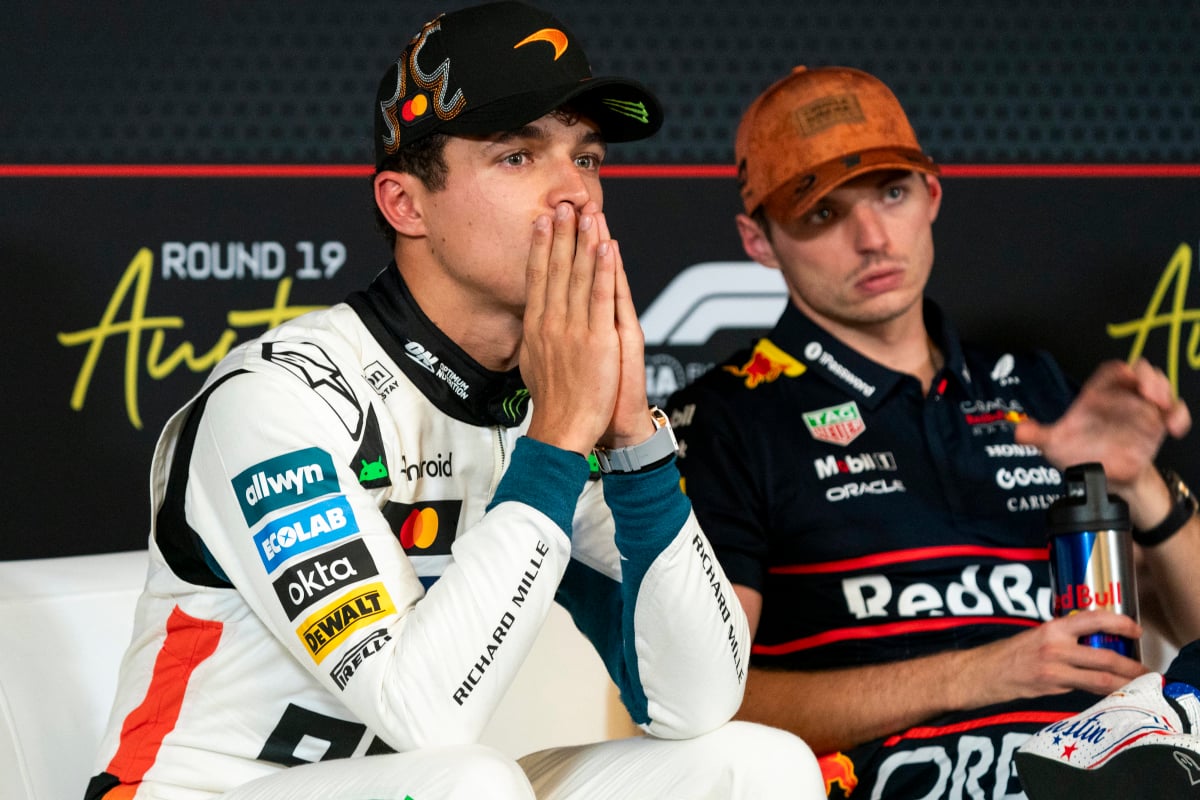
Latest News

Abu Dhabi Grand Prix
The FIA ruling that had major impact on Lando Norris title win
- 15 minutes ago

Lewis Hamilton
Lewis Hamilton reveals excellent F1 title advice to new champion Lando Norris
- 1 hour ago

Lando Norris World Champion
Is Lando Norris F1's weakest world champion?
- 2 hours ago

Abu Dhabi Grand Prix
F1 Results Today: NEW champion crowned as Max Verstappen heroics not enough at Abu Dhabi GP
- Today 15:55

Lando Norris
Who is Adam Norris? Lando's father who became a millionaire from pensions
- 3 hours ago

Abu Dhabi Grand Prix
F1 Abu Dhabi Grand Prix 2025 results: Final classification with penalties applied
- 3 hours ago
Most read

75.000+ views
'FIA discover illegal trick being used by multiple F1 teams'
- 19 november

50.000+ views
FIA announce late penalty verdict at Las Vegas Grand Prix
- 22 november

50.000+ views
F1 Qualifying Results: Las Vegas Grand Prix times and grid positions
- 22 november

30.000+ views
FIA announce late Lewis Hamilton promotion at Las Vegas Grand Prix
- 23 november

30.000+ views
Aston Martin issue emotional statement as star officially exits team
- 23 november

30.000+ views
F1 Qualifying Results: Abu Dhabi Grand Prix times and grid positions
- Yesterday 16:10























 Grand Prix of Australia 2025
Grand Prix of Australia 2025  Grand Prix of China 2025
Grand Prix of China 2025  Grand Prix of Japan 2025
Grand Prix of Japan 2025  Grand Prix of Bahrain 2025
Grand Prix of Bahrain 2025  Saudi Arabian Grand Prix 2025
Saudi Arabian Grand Prix 2025  Grand Prix De Monaco 2025
Grand Prix De Monaco 2025  Gran Premio de España 2025
Gran Premio de España 2025  Grand Prix du Canada 2025
Grand Prix du Canada 2025  Grand Prix of Austria 2025
Grand Prix of Austria 2025  Grand Prix of Belgium 2025
Grand Prix of Belgium 2025  Grand Prix of Hungary 2025
Grand Prix of Hungary 2025  Grand Prix of Azerbaijan 2025
Grand Prix of Azerbaijan 2025  Grand Prix of Singapore 2025
Grand Prix of Singapore 2025  Gran Premio de la Ciudad de Mexico 2025
Gran Premio de la Ciudad de Mexico 2025  Grande Prêmio de São Paulo 2025
Grande Prêmio de São Paulo 2025  Qatar Grand Prix 2025
Qatar Grand Prix 2025  Grand Prix of Abu Dhabi 2025
Grand Prix of Abu Dhabi 2025 